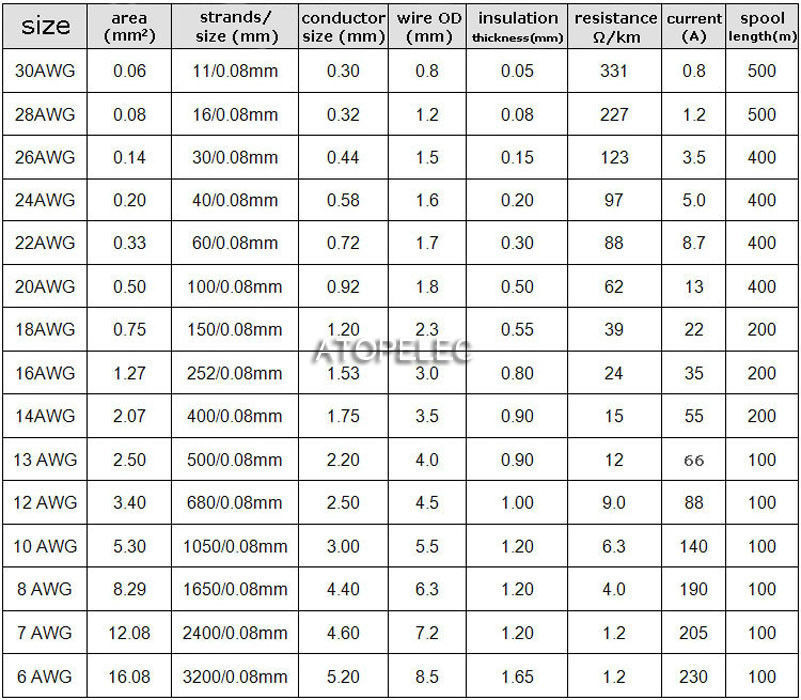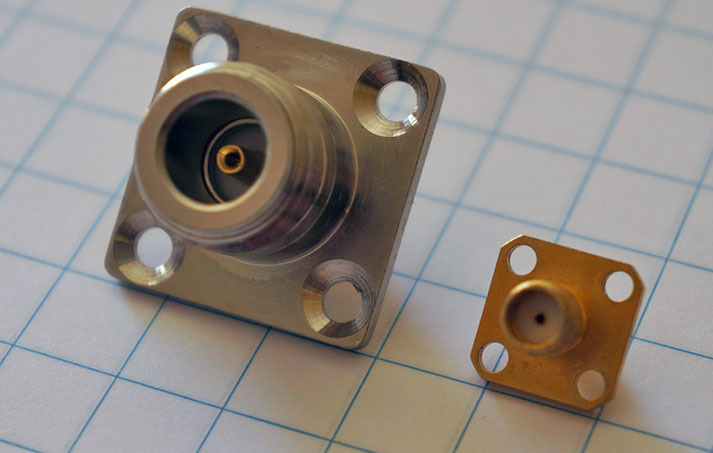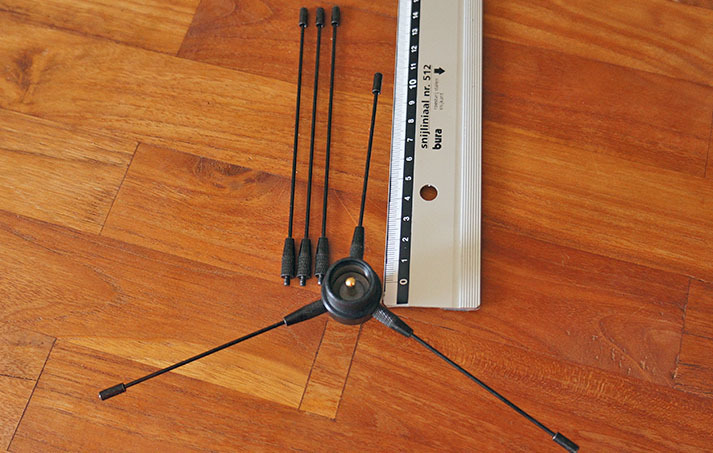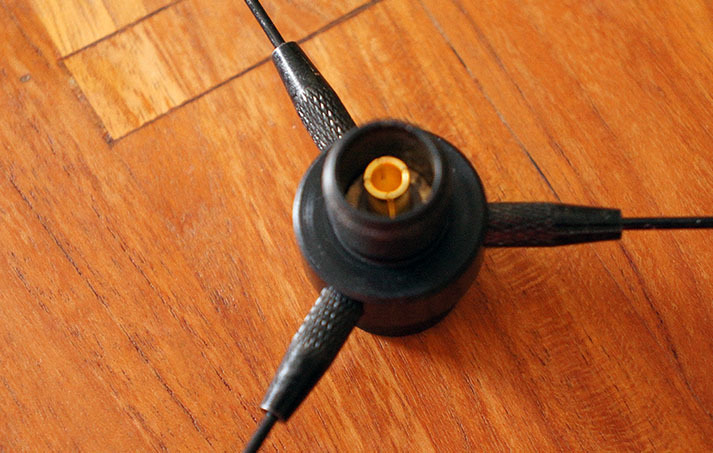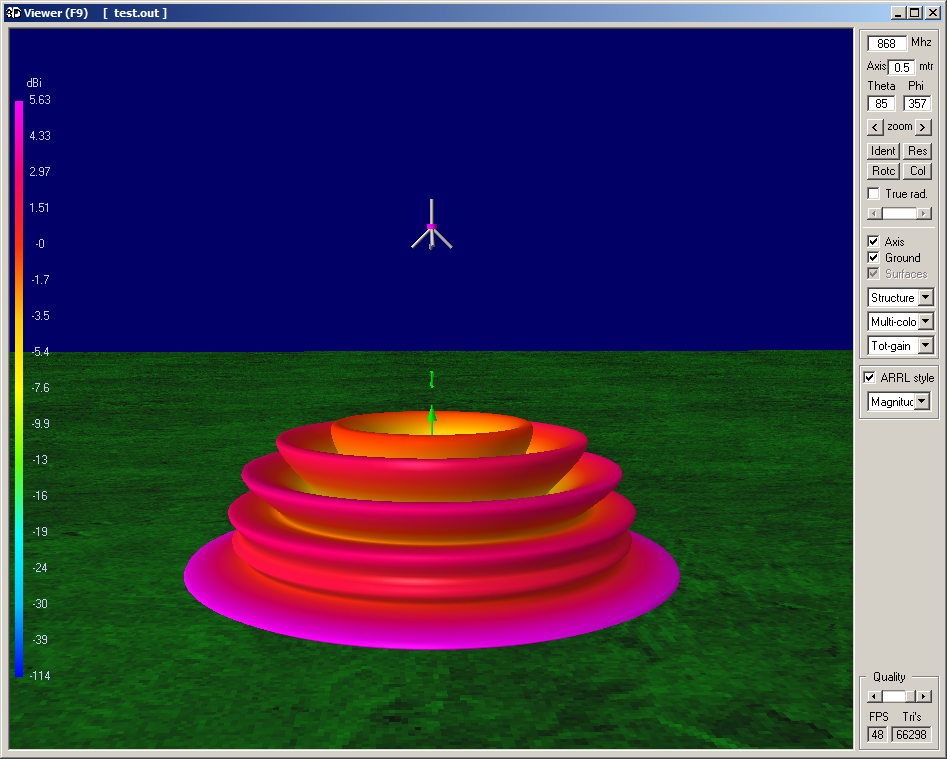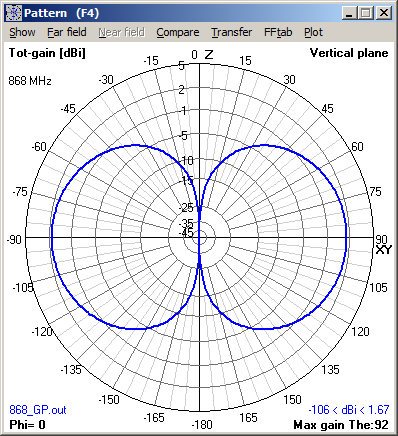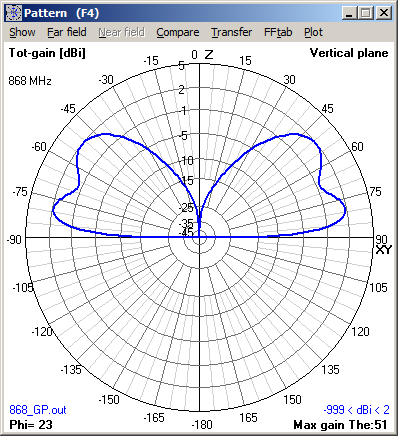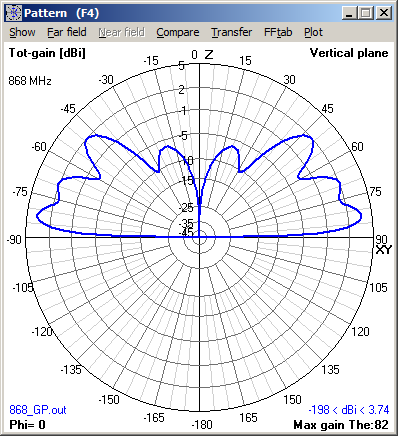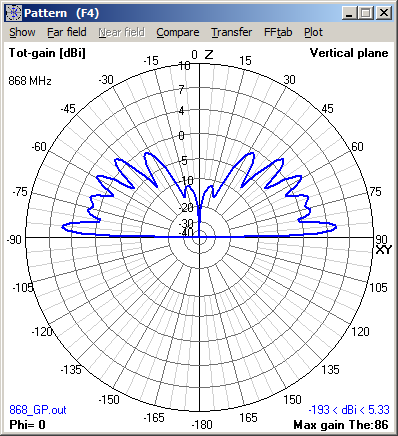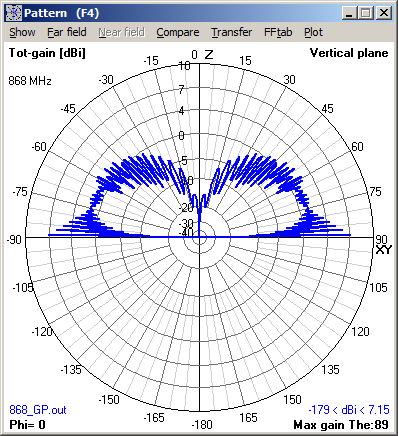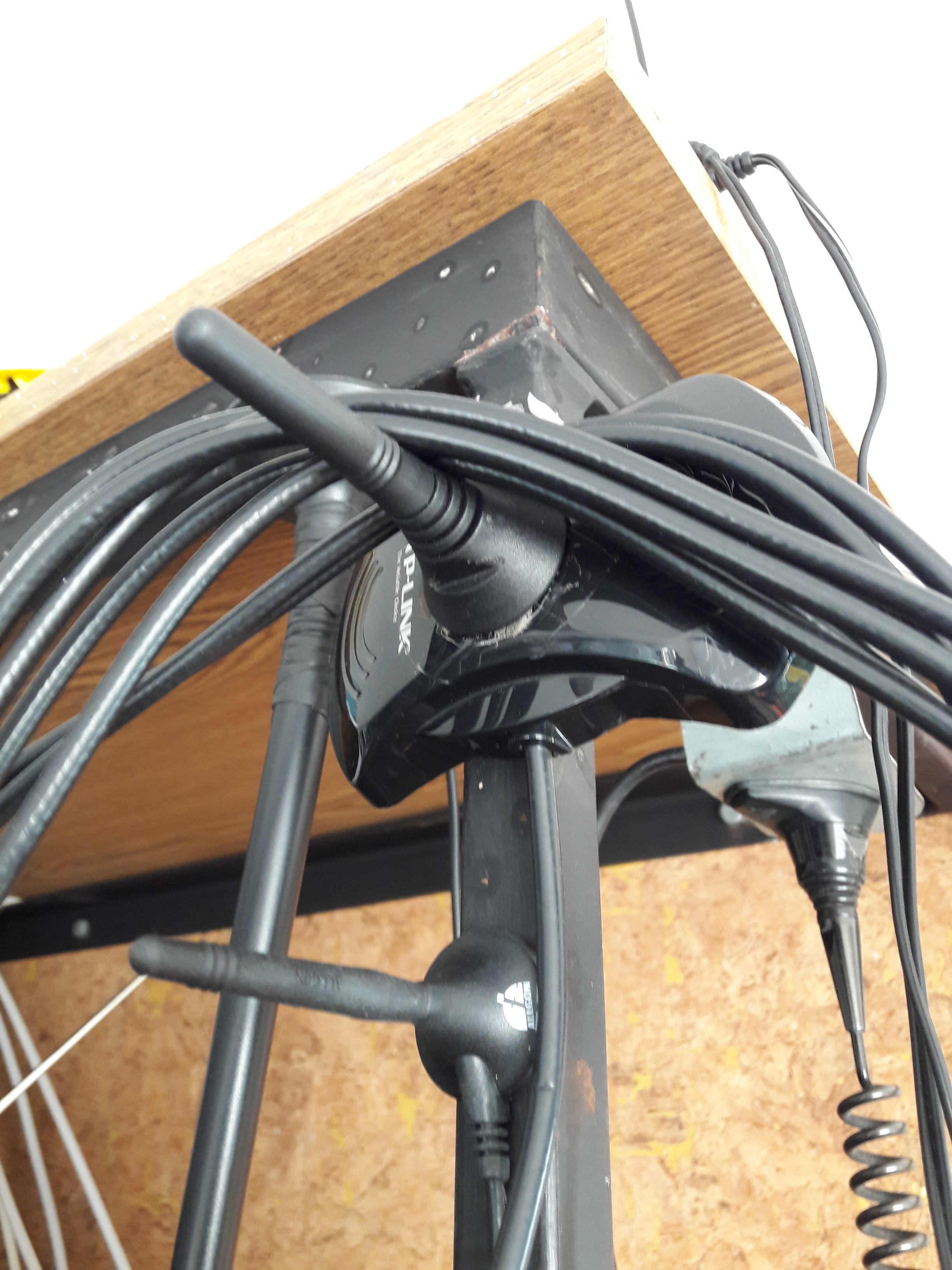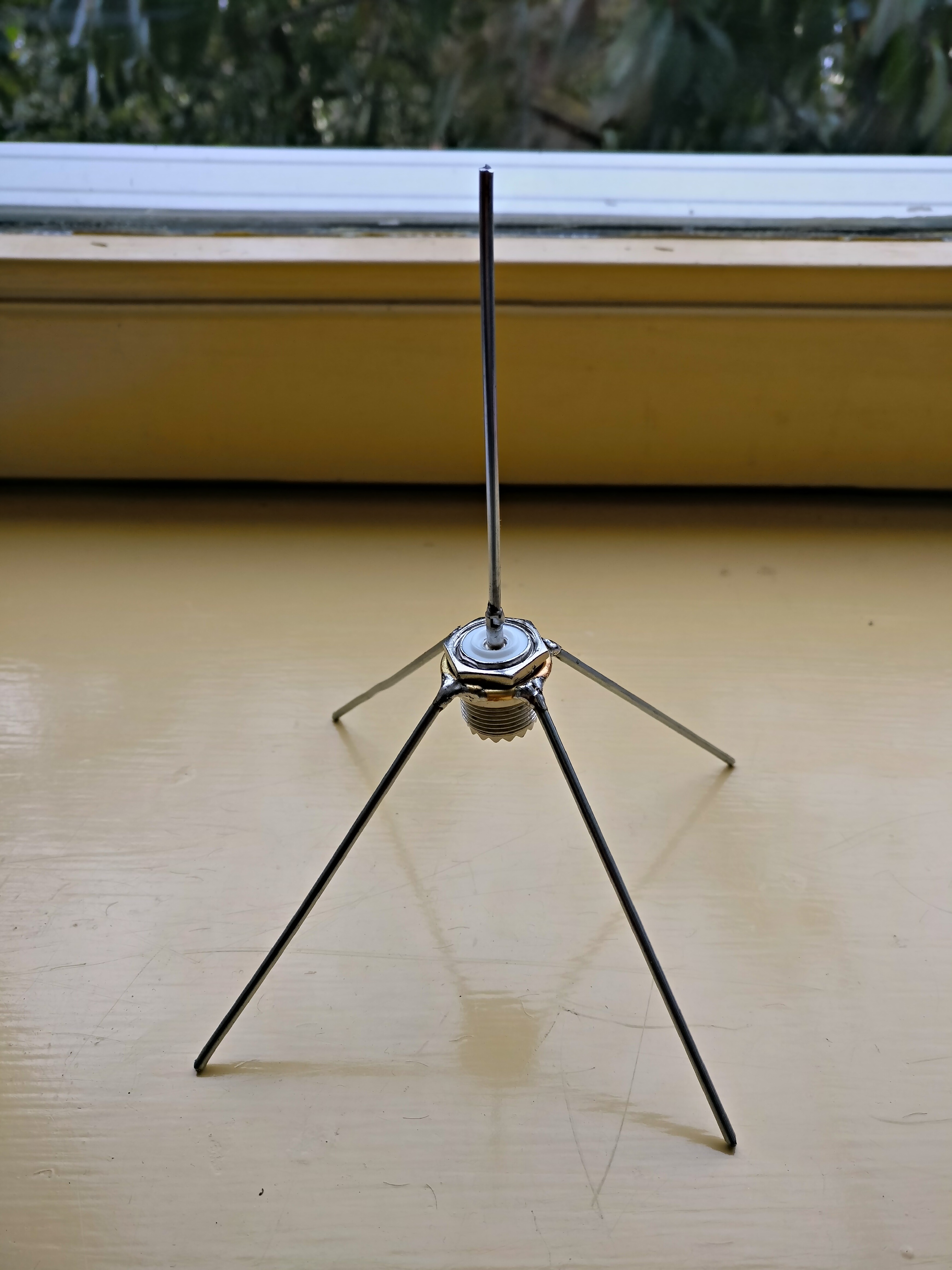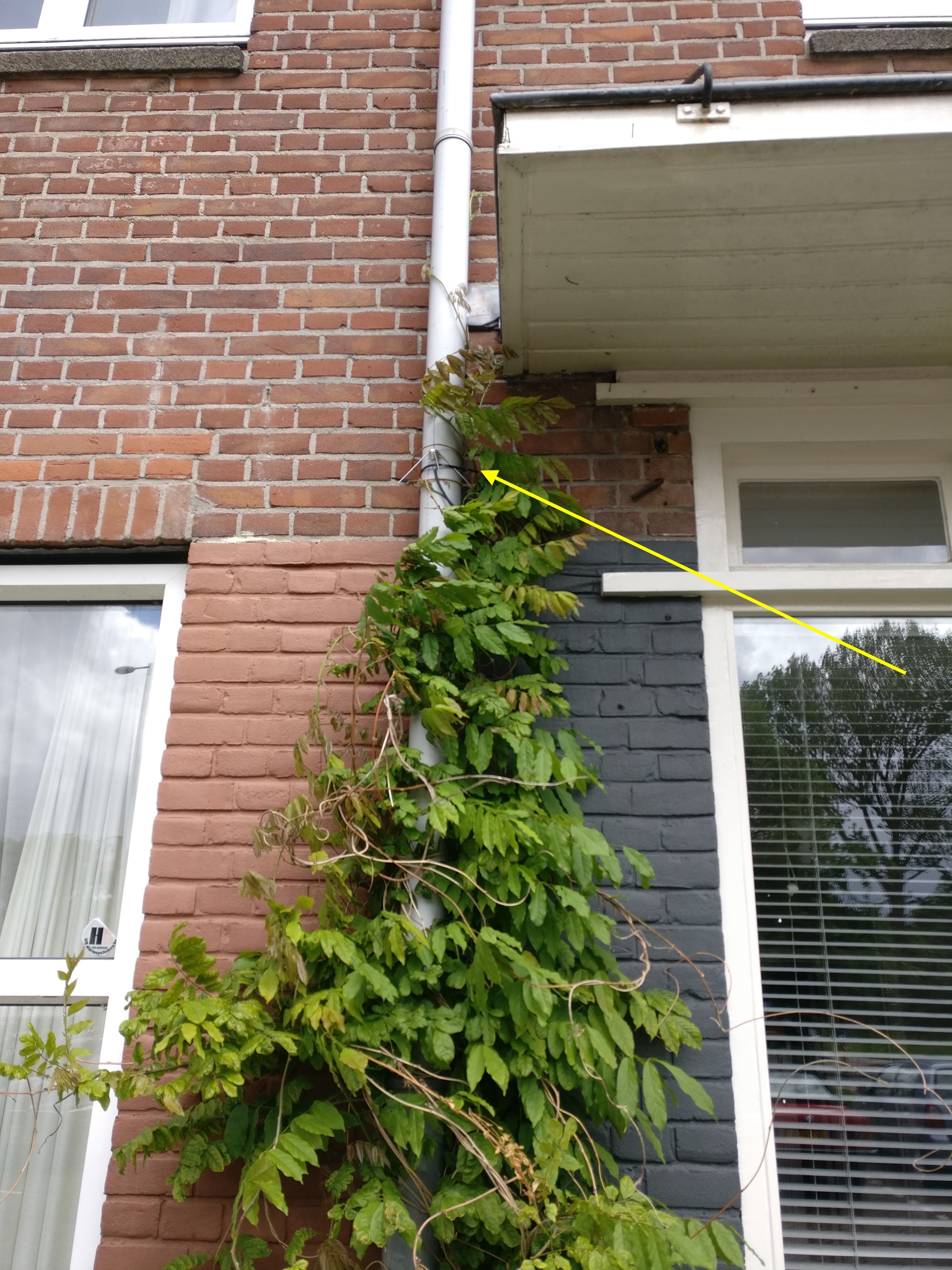Hamradio is all about experimenting, so why not build another antenna ?
One of the most common antenna’s is the ground plane antenna which is basicly a 1/4 lambda driver element and 3 or 4 reflector elements (creating a artificial ground). It’s a simple antenna to build with a good bandwidth, it doesn’t have any gain over a dipole because it’s dipole. Ok for the record it has a +2.15dBi gain (so you 3$ ebay 5 dBi antenna only has a 2.85dB gain over a dipole) 
More info at : Electronic Design
The design
Note : length adjusted for best SWR (see SWR measurement below).
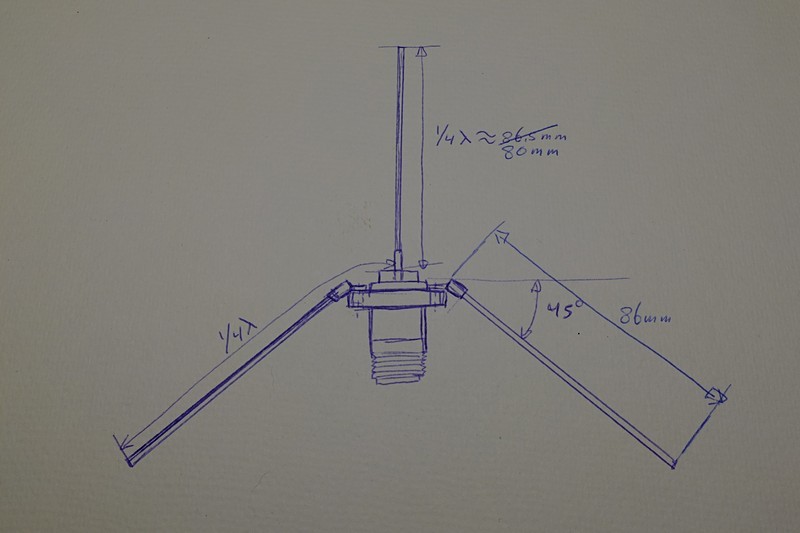
Materials used
aprx 50cm of 2mm diameter brass or copper wire cut to 5 pieces of 10 cm.
4 x cable ends M4 / Blue
1 x N-style chassis part
4 x M4 10mm cylinder screws
4 x M4 lock nut.
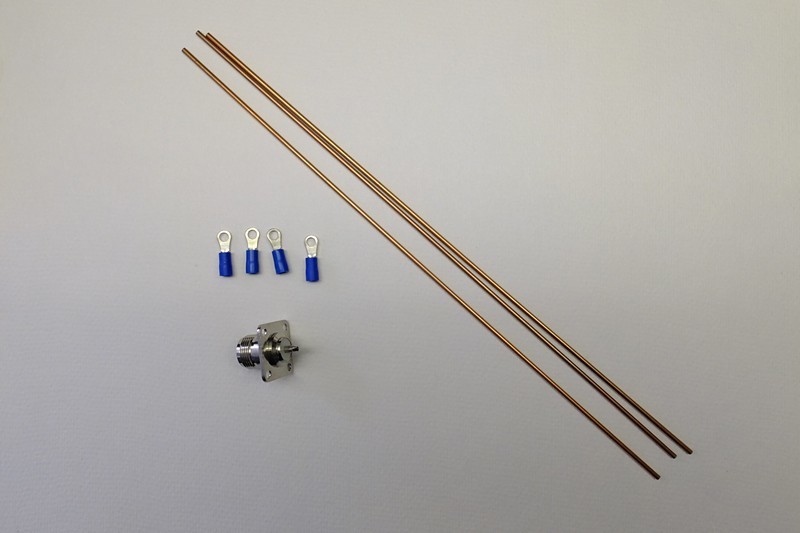
Step 1
Remove the blue plastic parts.
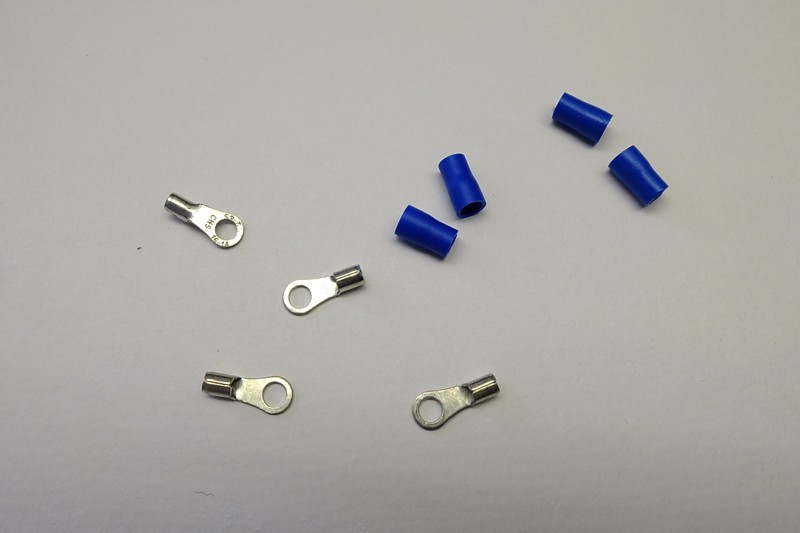
Step 2
Solder the cable ends to one end of the tubes.
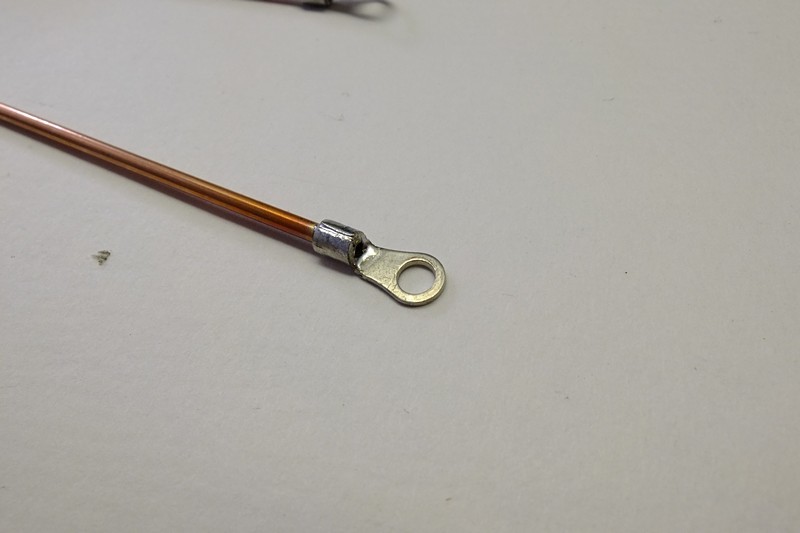
Step 3
Solder the tube to the center pin of the chassis part.
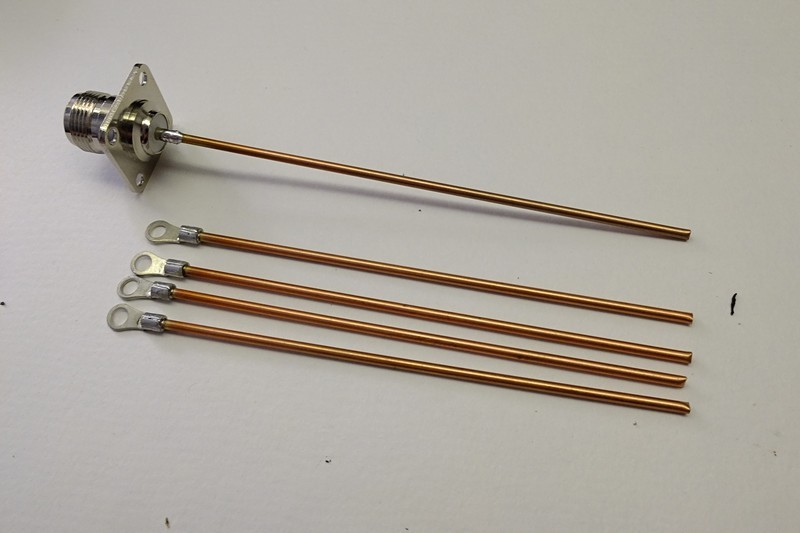
Step 4
Mount the ground plane tubes to the chassis part with the M4 10mm screws and the M4 lock nut. And trim the tubes to the correct length (see : design).
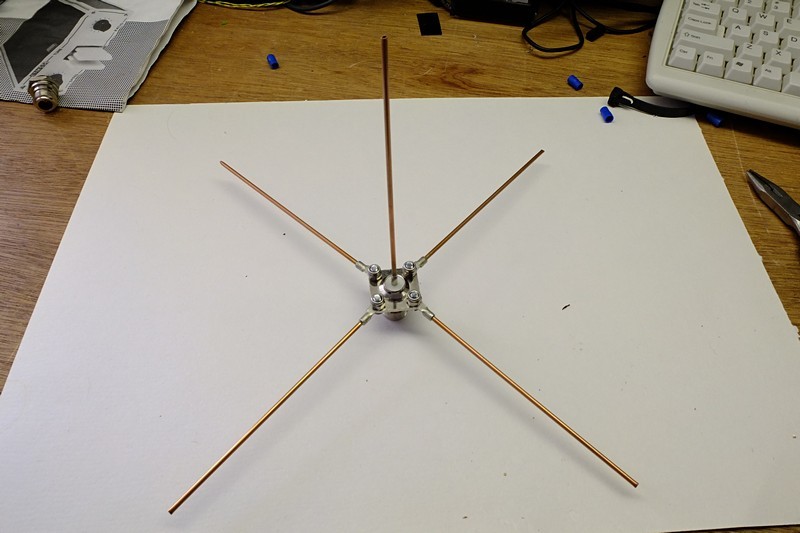
Step 5
Bend the ground plane wires to a 45 degr. angle.
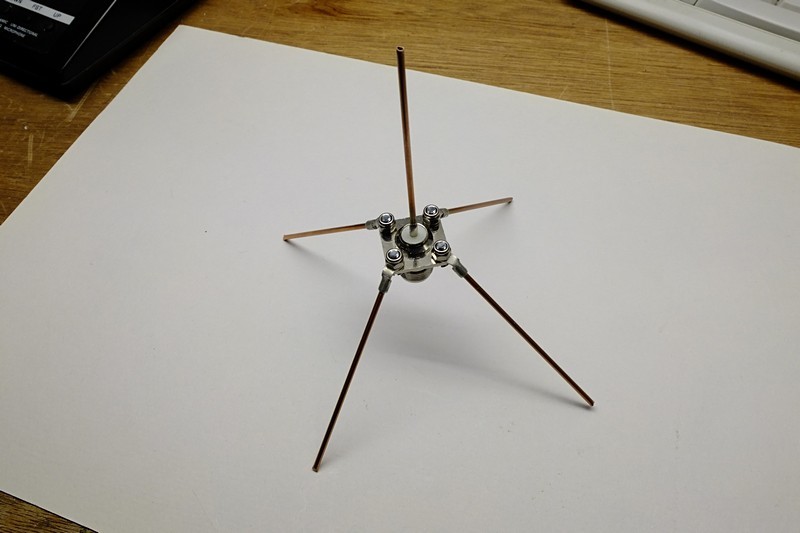
You’re almost done. When you want to use the groundplane antenna outdoor. Please apply a bit of silicone sealing around the top of the chassis part (so no water is collected on top).
SWR measurment result
After the inital building I took the antenna to my local Hamradio club (Veron/VRZA Twente) to have it tested with a RigExpert AA-600 (which when connected to the computer can work up to 1.4Ghz) from a fellow Ham. Some minor tweaking (I made it for a lower frequency so I could trim it for the 868Mhz) the SWR dip was right on the 868Mhz.
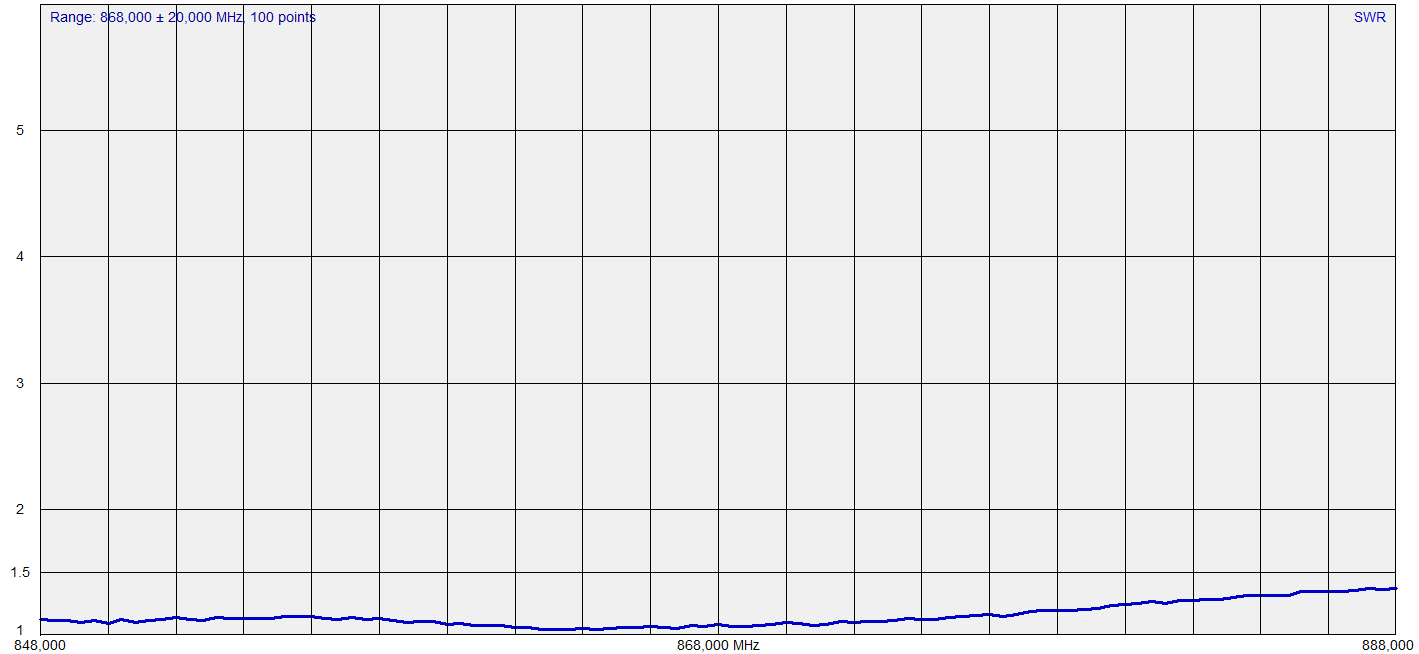
Installing
This groundplane antenna can be easily installed on a 32 mm PVC tube.The connected cable will pull the groundplane antenna to his place.
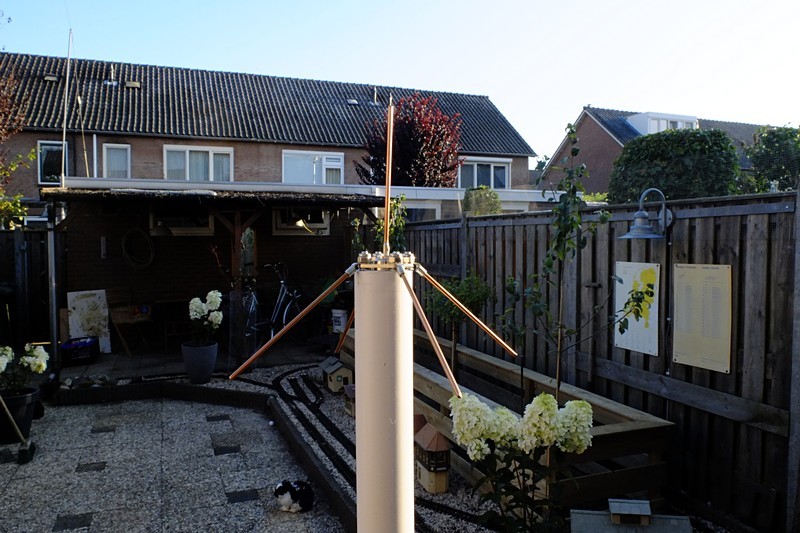
At this moment I can’t tell anything about the true signal response. I have to clime the roof to swap the antenna’s.
Note : I have written a LAB about it which you can find it on this link.

 you got me there. Indeed they should be longer aprx 10 cm.
you got me there. Indeed they should be longer aprx 10 cm.